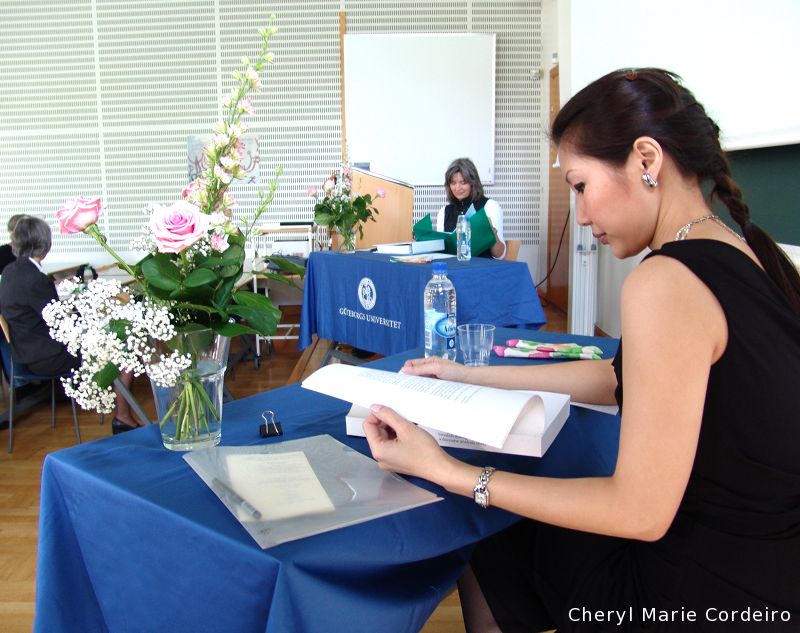[R-slider id=”15″]
Text & Photo © JE Nilsson, D Neikter Nilsson, CM Cordeiro-Nilsson, Sweden 2009
One of the things that have dawned on me during the years I have spent working on my thesis is that writing a doctoral thesis and having it approved are done for various reasons, and thus approached in many different ways around the world.
Just before the public defence session begins. The Opponent and main examiner was Associate Professor Kirsten Jaeger from Aalborg Univeristy, Denmark. She is seated adjacent in table to me on a small stage in a lecture hall at the Department of Linguistics, University of Gothenburg, Sweden.
One reason for people to pursue a PhD is to obtain a final, formal confirmation of their status as an expert in their own lifelong field of work. In northern Europe, you can research and write a PhD thesis alongside your full-time occupation, and there is no real rush to it. If it takes ten years or more, it does not really matter. That the time taken to write a PhD thesis is secondary to the quality of the thesis is very much emphasized here in Sweden, and these values are reflected in the average time to complete a PhD in Scandinavia, which is 10 to 14 years, without anyone batting an eyelid.
A more common reason for pursuing a PhD is in preparation to your academic career in your particular field of interest. This is mostly done at the university where you’ve received your basic training, by adding a research education on top of what you have already done in your undergraduate days. This is a quicker way and you follow the methods of the professor you have already been studying under.
Personally, I have a passion for research and pursued a PhD because I wanted to become a research specialist in a field of my own choice and one that I have pioneered myself out of pure interest, which is to study Scandinavian management / leadership in Asia, in particular in Singapore. I also wanted to use the two qualitative methods of grounded theory and systemics linguistics as analysis tools on business administration matters, while most other studies on management have thus far favoured quantitative methods.
Having come from a mostly Anglo-Saxon education background, I have also sped through, the best I could, the Nordic education system with 6 years doing my PhD, that included a year as a ‘visiting student’, the time spent learning Swedish as a third language, the sporadically offered compulsory PhD courses for all doctoral students and the writing of the thesis.
I actually saw this entire process as something quite enjoyable. To be able to dig into tens and thousands of words and numbers, get them into order and eventually start seeing them form into patterns of meaning and information, is actually fun. I realize this might finally position me as a true blue ‘nerd’, but so be it.
PhD Public Defence session
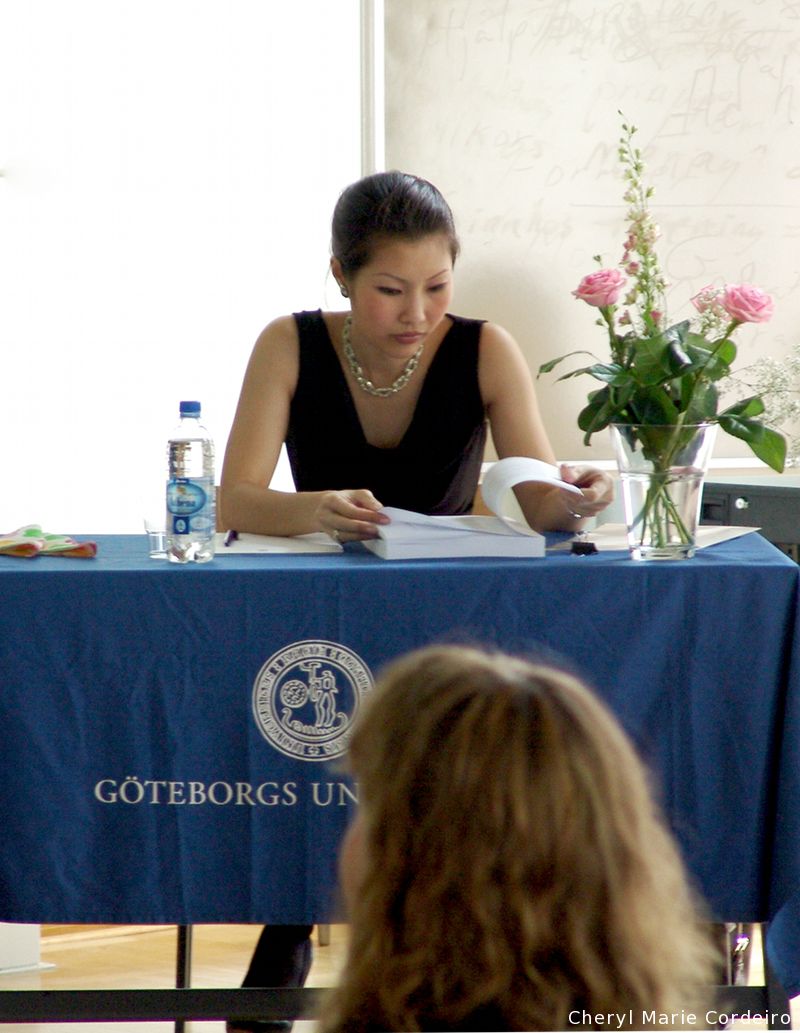
Protocols for PhD public defence sessions in Scandinavia vary according to which traditions the institution follows. Some universities in Finland are amusingly conservative, so much so that one can almost see how doctoral public defences were conducted during the Medieval times, while universities in Denmark can be quite modern and informal. Swedish traditions are somewhere in-between.
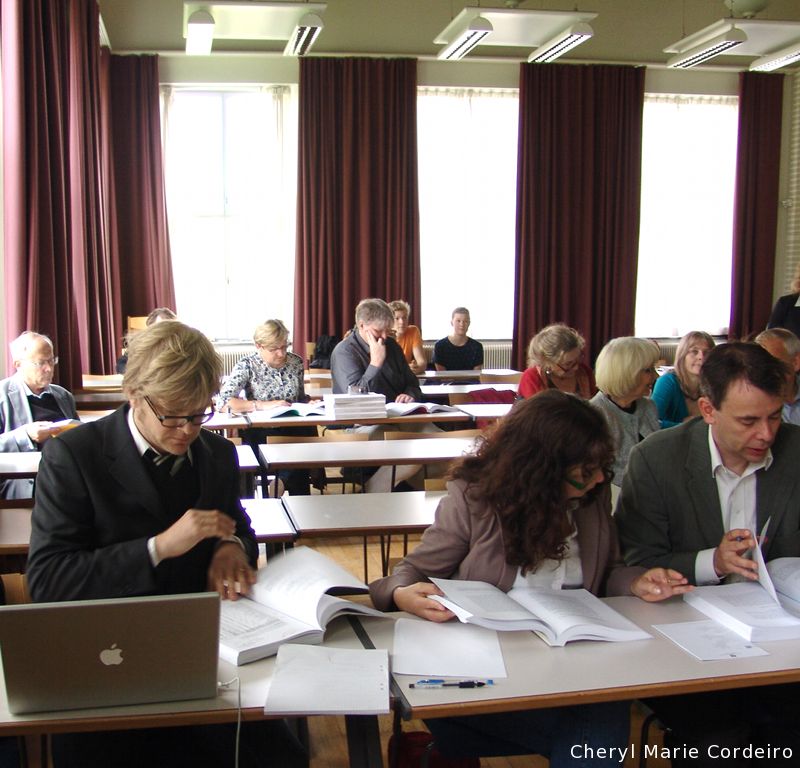
All in all, around thirty persons made it to the event last Saturday.Considering this was during a spring weekend, I was impressed and happy to see so many attending the disputation instead of setting up barbecue in their gardens or pretty much doing anything else at all.
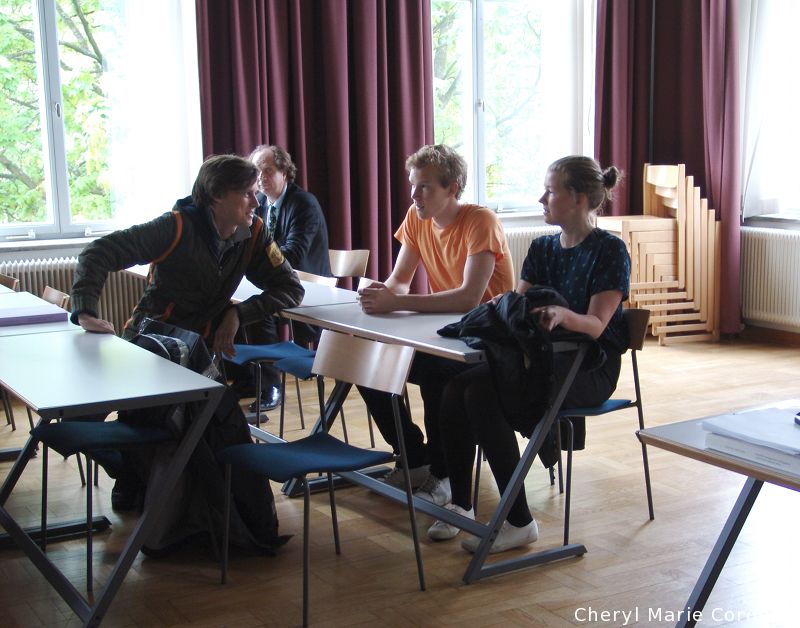
The procedure during my defence session in Sweden began with the Chairman opening the session by introducing the participants, which were the Candidate (myself) and the Opponent, in this case, Associate Professor Kirsten Jaeger from Aalborg University, Denmark, who was also the main examiner in the examination committee.
Next step was for the Chairman to ask the Candidate if there were any additions or corrections to the text. Most candidates will have an ”errata” list that would now be added to the thesis. This is important if there are any significant mistakes in the paper, for example, if the word ”not” was left out in the main conclusion.
Presentation of the thesis
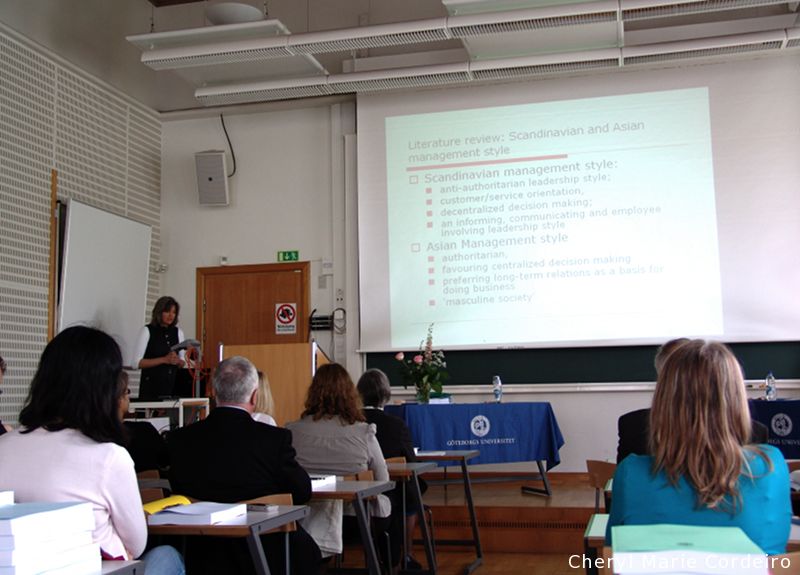
In Sweden, the main examiner uses the first hour of the session to present the thesis to the examination committee and the audience. The traditional purpose of this is to present the researchers opinion (standpoint = ”thesis”) to the academic community to ensure that the work is original and not plagiarized.
Then the actual proceedings take place. The first step, that is quite signicficant, is that the Opponent presents the entire thesis to the audience. As the author of the thesis, I could with gratitude, sit back and listen to this significant effort by the Opponent as she presented my entire thesis. In this case it was over 550 pages and I honestly don’t believe anyone more on this planet will look into those pages as carefully as she had done. My only contribution here was, by the end of the presentation, to reply to the question of if anything had been misunderstood. In this manner, this defence is similar to a court session. If I had nothing to change or add, then the actual questioning by the Opponent and the examination committee of the Candidate’s work began.
To me, this was very exiting. It was really fun to get questions and to be able to discuss and expand on something that had been my main interest in life for years.
After the examination committee were done with their questions, the disputation session opened to the public and people sitting in the audience were invited to ask questions. Sure enough, there were quite a number of questions coming from them too.
When all questions and answers were finally over, the Chairman adjourned the session and withdrew for recess together with the examination committee. It was during this time that they were to decide whether or not I would pass. Any possibility to change the text, to add some new thought or regret anything said, was now over. And together with the guests I had nothing more to do except enjoy the buffeé we had arranged and to wait for the verdict.
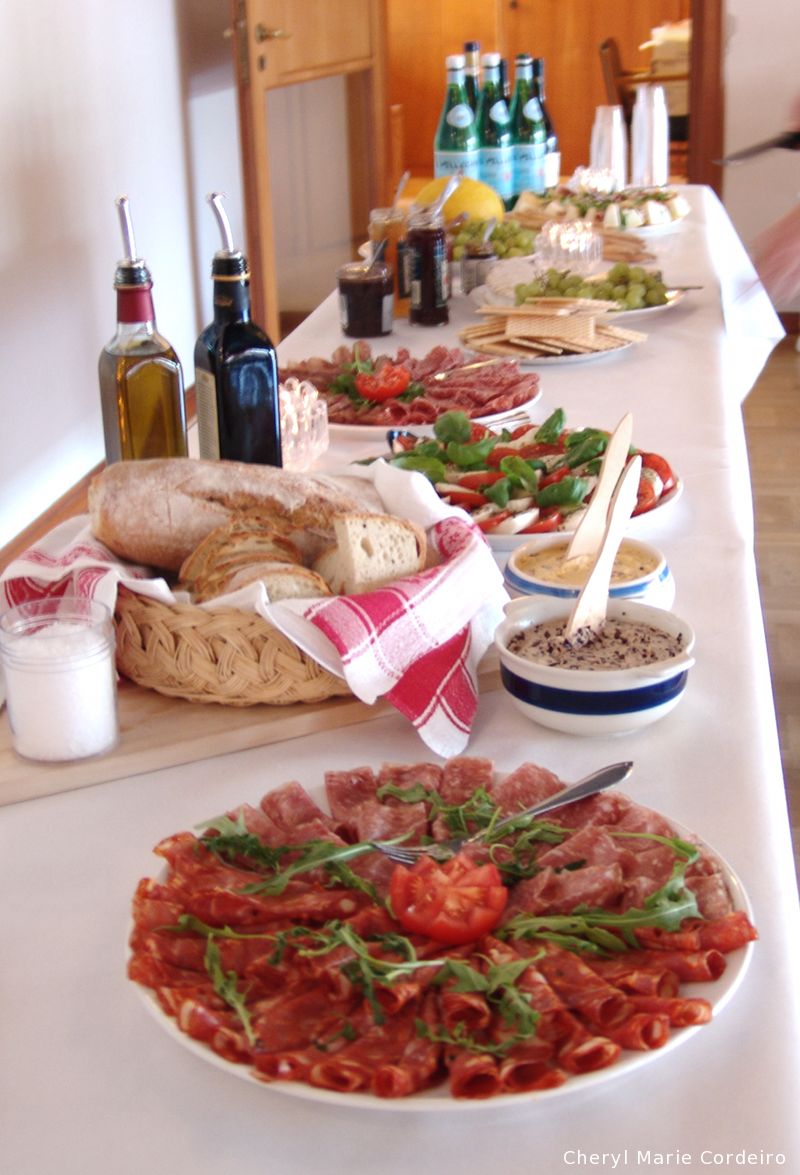
After disputation buffet.
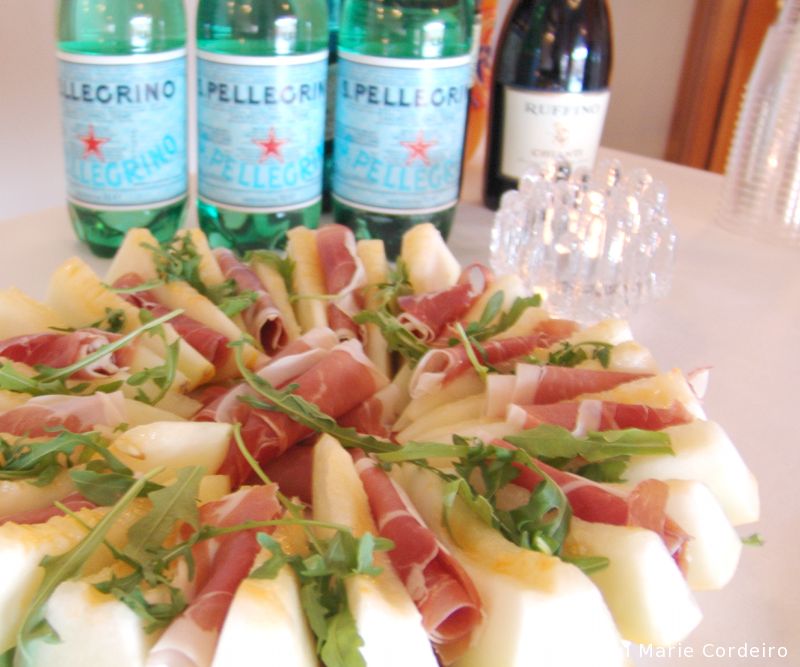
Slices of melon with prosciutto.
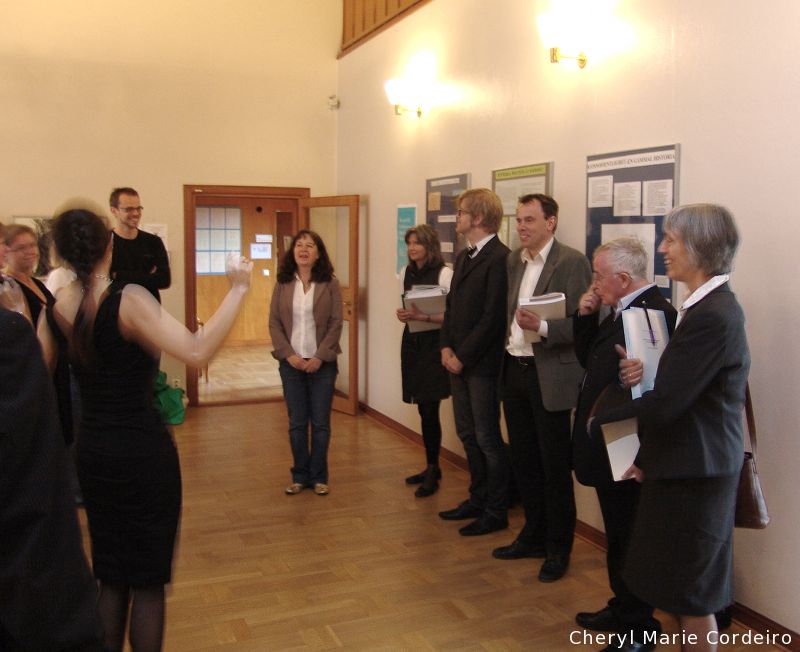
It was taken the very second that the examination committee (pictured along the wall to the right) announced that I had passed the viva. The department brought out a bottle of champagne and cheers came from all around!
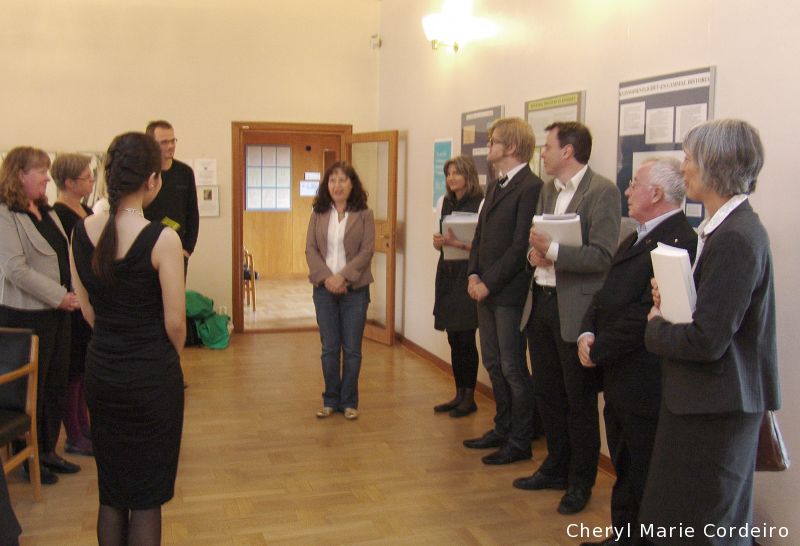
In many ways the public defence was friendlier than I had expected. Perhaps it was my supervisors who gave me the confidence to believe in myself; that if they thought my work was good, that there would actually be no question that I would pass. But as is the case with most important events in life, it is easier to be calm after than before.
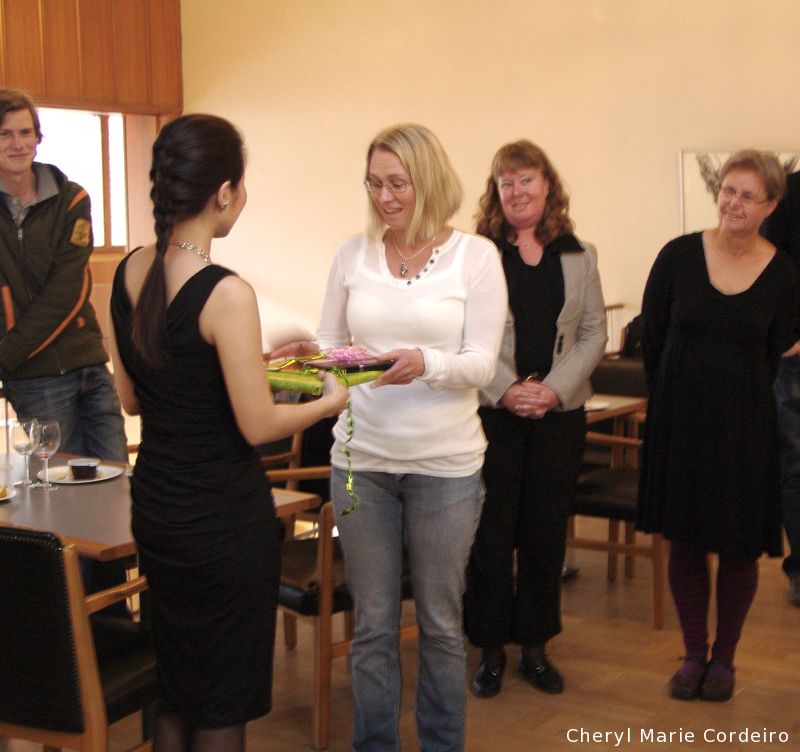
Many friends and research colleagues presented nice gifts and most fantastic flower bouquets – Thank You, All!
Some flowers are still on my breakfast table, bringing the most gorgeously intoxicating spring fragrance to our whole house.
Several people asked me if I felt nervous about the whole event. Well, I think I was much more nervous about this six months ago, when I realized that there would come a time when I had to publicly defend my thesis, than on the day itself. Now, everything that I had planned for, for years were in place and the event rolled out more or less as we had expected.
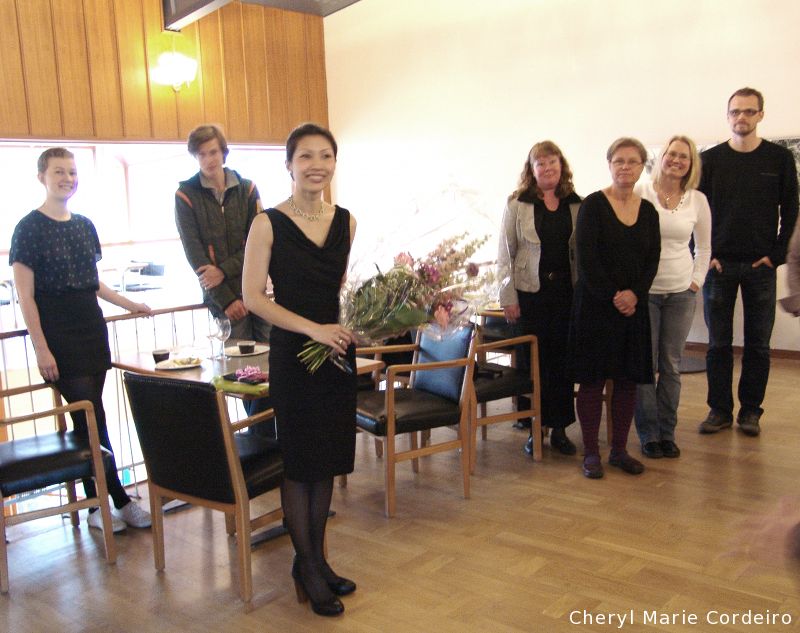
With a bouquet of lovely pink roses, given by the institution upon graduating.
I couldn’t be happier than I am about the disputation, and my heartfelt thanks goes out to all who helped make this a memorable day!
Here at the University of Gothenburg, the Department of Philosophy, Linguistics and Theory of Science (FLOV) is changing its locality to the former city courthouse, so in this sense, everything was new and exciting. The ceremonies and the way things were set up broke new grounds and I understood that many hoped that our French-Italian buffeé in particular should become a tradition. Well, if that were the case, I would definitely hang on for the next disputation event from the department!
The building of the old courthouse had three storeys and the disputation was held in a room on the third floor. The floor in general had tall glass windows and white walls that were complemented with light wooden floor. The interior design is typically Swedish in that it allowed light into the rooms and created a calm atmosphere, one in which encouraged people to sit, relax and mingle.
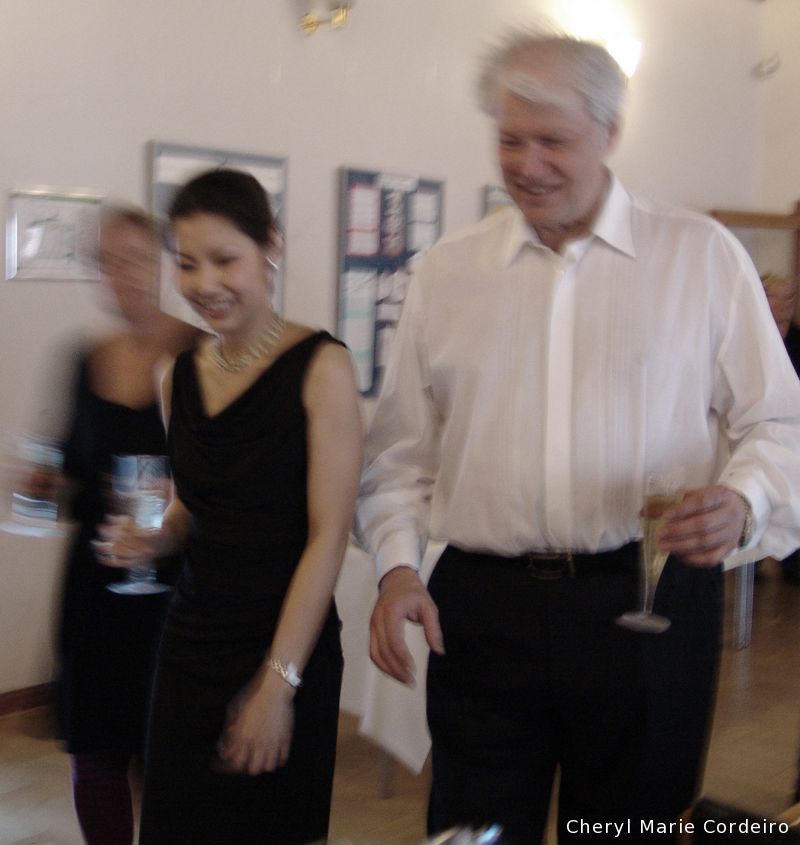

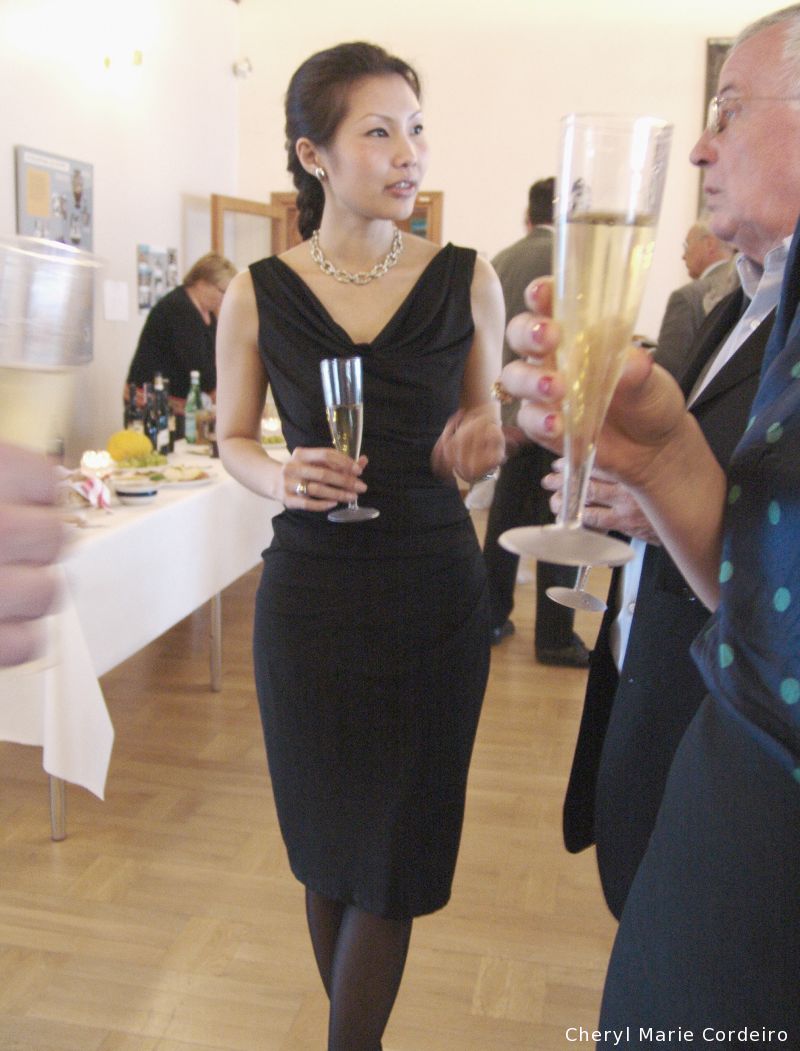
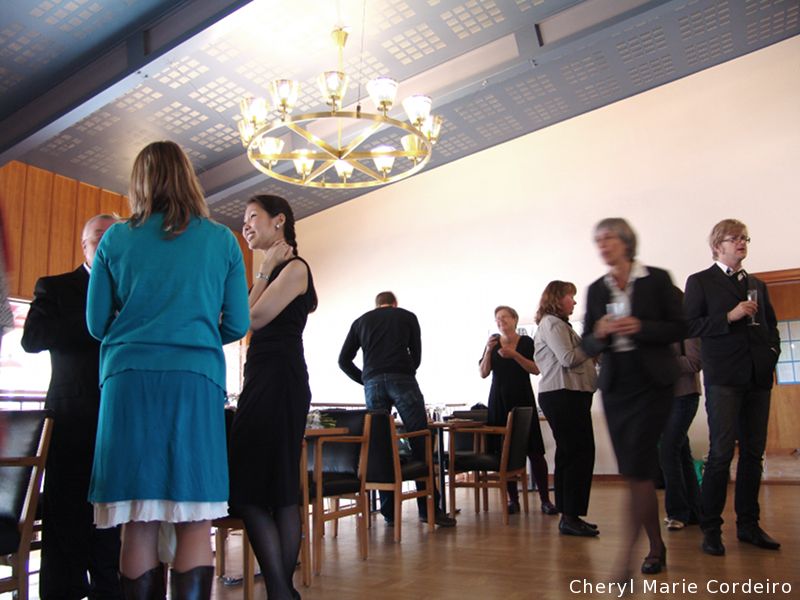
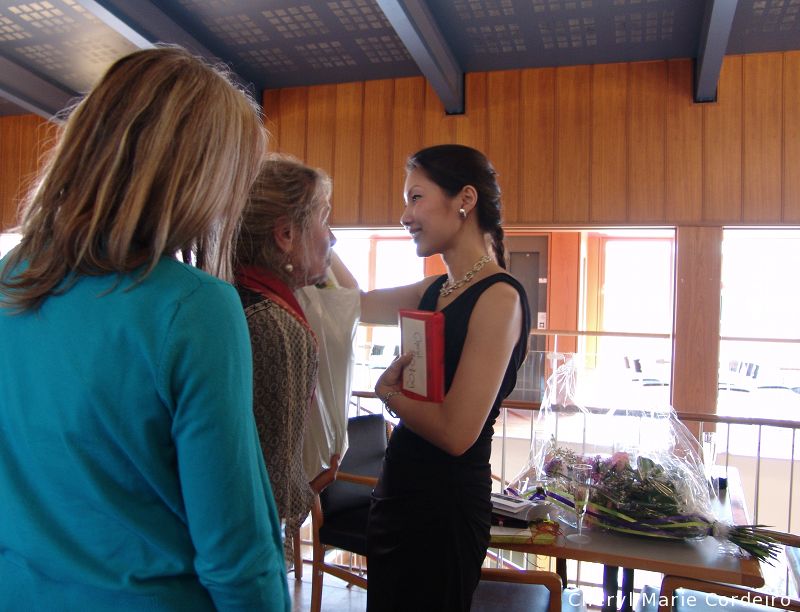
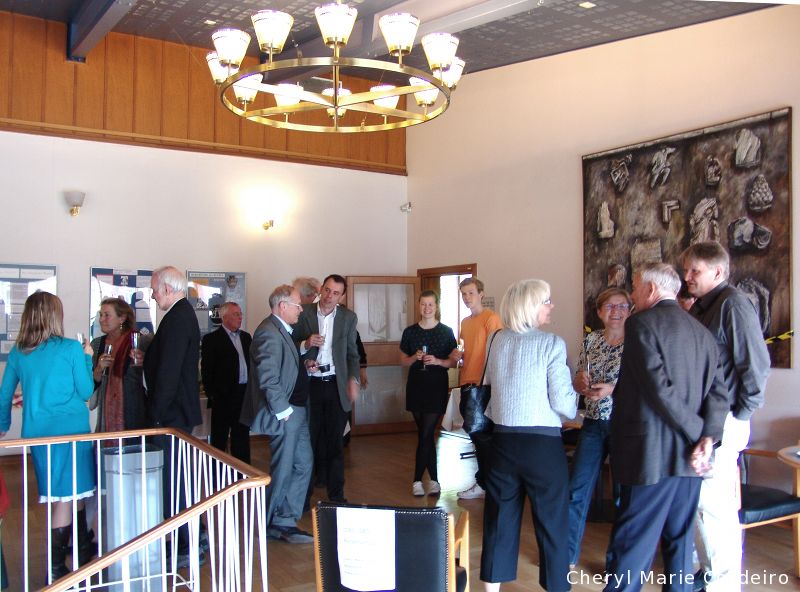
After the examination committee came out of recess. Friends and colleagues mingle during the buffet.
The crowd lingered long into late afternoon. Eventually, we all had to leave to prepare for the evening’s dinner.
